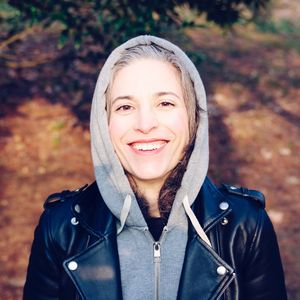How does our face age?
Aging happens to everyone. Here's what to expect at every decade.
[Editor's Note: A previous version of this article originally appeared in The Huffington Post]
The aging process is the inevitable and predictable result of living longer. The manner and degree in which we age over the decades of life can be explained, understood and even manipulated by our lifestyle. This is the first of a series of articles about our aging face in which I will detail the changes that occur as we age. The articles to follow will describe and explain ways to slow the aging process down and will discuss those habits to avoid that most certainly hasten that journey. Try not to become depressed by the changes that I describe, as they are part of our life's journey.
There are two distinct systems affecting the aging face: intrinsic and extrinsic. Intrinsic or natural aging begins in the mid-20s, and continues steadily throughout life. Genetics plays a key role, allowing us to either blame or thank our parents for their contribution to our wrinkles and bags! Extrinsic aging is a combination of external factors that advance aging activity. These include sun exposure, pollution, gravity and personal habits like smoking and skin care. Let's explore this life-long march through time by each decade. Remember, the descriptions below are generalizations and may vary from individual to individual, dependent upon genetic and extrinsic factors.
20s and 30s
Sadly, our skin's intrinsic aging process begins as early as our mid- twenties. Production of collagen, the backbone of skin, decreases. Elastin, the substance that allows skin to snap back into place, starts losing its spring. Dead skin cells do not shed as quickly and the production of new skin cells slow down. Since intrinsic aging is just beginning, those signs are not yet visible, however some people may demonstrate fine line wrinkles, usually around the eyes. Extrinsic aging factors active during these decades, will affect us significantly later.
40s
Extrinsic and intrinsic factors progress and contribute to age the skin. Decreasing hormone levels begin to influence skin, increasing dryness. Fine lines deepen, especially around the eyes (crow's feet), forehead and mouth. The lower eyelids may experience bulging of subcutaneous fat, forming bags, and the skin in general, becomes drier and less elastic. Skin pore size may increase and become noticeable. Early signs of jowl formation are seen. Extreme weight loss propagates loose, hanging skin because of the loss of elasticity. The fatty layer beneath the skin starts to decrease, making it appear thin and transparent. Hair starts turning gray. Hair loss for men and women can become evident.
50s
Wrinkles deepen and become folds or furrows around the mouth, forehead and face. Facial bone and fat mass decrease, causing sagging skin to appear more prominent. Jowl formation of the cheeks increase and skin tone becomes more uneven. Eyebrows droop, increasing upper eyelid skin redundancy, creating a fatigued or angry appearance. Lower eyelid bags become more noticeable. Neck skin starts to sag and muscles beneath become prominent. Skin becomes drier and sun spots turn darker and more prevalent.
60s
Continued reduction of facial fat and bone structure causes the cheeks and eye sockets to appear even more hollowed. This process, along with the help of compounded years of gravity, cause facial skin to appear even more lax. Menopause and decreased hormones maximize dry skin. Facial wrinkles and furrows deepen, especially the smile lines of the mid-face called nasolabial folds. Jowls become heavy. Aging of the neck continues with thinning skin allowing underlying separated muscle bands to appear more conspicuous. Hair thinning and loss continues and the nasal tip loses elasticity, and begins to droop. Even our ears change with age! Gravity's effect on our earlobes stretch them and actually increases the size of our ears.
70s and Beyond
All of the above conditions continue to progress. The combination of loss of skin elasticity, decreased mass of facial fat, bone and muscle and relentless gravity deepen wrinkles and furrows as our face seems to actually droop. This can cause the lower eyelids to pull away from their protective position next to the eyeball, causing dry eyes and allow irritants like dust to cause chronic discomfort. The nose and ears appear larger because of loss of cartilage strength. So there you have it, we are born, and not long after, we begin to age and look older! It is part of life that we have little control, or do we? The extrinsic, external facet of the aging process can be affected and slowed by a solid skin lifestyle. Check soon for The Aging Gace, Part 2, where I will share tips to create a substantial skin care regimen for all age groups to battle and defy the inevitability of looking older as we grow older!
Robert Tornambe, MD is a New York City Plastic Surgeon and Medical Advisor for Trueself. Certified by the American Board of Plastic Surgery, Dr. Tornambe has been practicing plastic surgery for more than 25 years. He is a fellow of the American College of Surgeons, was featured in NYMAG's "Best Doctors" issue, and was the Chief of Plastic Surgery at NYC's Cabrini Medical Center for 20 years.
